From U.S. Fish and Wildlife Service Midwest Region:
This may look spooky, but it isn’t nearly as scary as a world without bats! Bracken Cave in Texas is the summer home to more than 15 million Mexican free-tailed bats, making it the largest bat colony in the world.
Photo: Bats exiting Bracken Cave by Ann Froschauer/USFWS.
Protecting natural resources, including air, land and water. Also of interest are threatened and endangered species as well as endangered species. Conservation (wildlife, soil, water, etc.) issues also discussed. Topics include: RCRA, CERCLA, Clean Water Act (CWA), NEPA, 404 Permits, EPCRA, FIFRA, and others.
Search This Blog
Monday, October 31, 2016
Thursday, October 27, 2016
Pennsylvania Landowners Helping Indiana Bat through ‘Spooky’ Declines
From the #USDA:

Posted by Molly Hippensteel, Natural Resources Conservation Service, Pennsylvania, on October 26, 2016 at 1:00 PM

NRCS Chief Jason Weller (left) visited with NRCS District Conservationist Rob Clauto (center) and Blair County landowner Tom Belinda (right) to see some of the practices at work on the land.
When most people think of bats, images of dark caves, vampires and Halloween come to mind. But actually, bats get a bad rap, and we often don’t know how important they are for controlling insects, pollinating plants, dispersing seeds and improving biodiversity.
Many of our nation’s bats are facing population declines to near-extinction levels, primarily because of disease and loss of habitat. One of those species is the Indiana bat, an endangered species that has experienced rapid declines since the 1960s.
The Indiana bat, which has mouse-like ears, is found over the eastern half of the country. Indiana bats are a very social species, and they cluster together during hibernation. The bat got its name because the first one to be discovered was in 1928 in a cave in southern Indiana. The Indiana bat feeds on insects, and it is great for controlling mosquitoes and other flying pests. In summer, female Indiana bats gather into maternity colonies and each mother bat births, nurses and rears one pup under the peeling bark of an older-growth or diseased tree. The species spends its winters hibernating in caves or sometimes abandoned mines.
Unfortunately, this species is facing a new foe. White-nose syndrome, a fungal infection, is taking a toll on the Indiana bat and other bat species across the country, but there is hope.
With the help of biologists, private landowners, USDA is working to reduce the spread of this disease, as well as promote protection of high-quality habitat. For example, USDA’s Natural Resources Conservation Service (NRCS) assists Thomas and Wendy Belinda of Blair County, Pennsylvania, to improve the management of forests on their land. The Belindas are working to ensure diverse, open forests for the bats’ survival, as the bats prefer roosting in the cavities of large trees or under loose tree bark in open forests where the sun’s penetrating rays provide warmth.
The Belindas are planning and implementing a variety of management practices to restore more than 800 acres of forestland through the Healthy Forest Reserve Program—one of the Farm Bill programs available to landowners to receive assistance for adopting conservation practices. Through this program, the Belindas enrolled their land into a permanent conservation easement and have made a number of improvements, including removing competing trees, retaining highly preferred roosting trees and controlling invasive species.
Located in a key area adjacent to state game lands and nearly connecting to a nearby state park, the Belindas’ easement is part of a corridor of permanently protected Indiana bat habitat totaling approximately 21,000 acres. NRCS staff are also actively working with other nearby landowners, which will expand this corridor even more. These efforts provide better quality and more secure summer breeding habitat for Indiana bats with the hope that the species will once again thrive in this area.
Related Posts
Wednesday, October 26, 2016
Fall Migration of Caribou
From U.S. Department of the Interior:
The fall migration of caribou takes them over sand dunes, past snow-capped mountains, under brightly colored forests and through the Kobuk River in Kobuk Valley National Park in Alaska. Onion Portage (seen here) is a National Historic Landmark where native Alaskans have gathered for 9,000 years to harvest caribou as they forded the stream. Photo by Matt Cameron, National Park Service. — at Kobuk Valley National Park.
The fall migration of caribou takes them over sand dunes, past snow-capped mountains, under brightly colored forests and through the Kobuk River in Kobuk Valley National Park in Alaska. Onion Portage (seen here) is a National Historic Landmark where native Alaskans have gathered for 9,000 years to harvest caribou as they forded the stream. Photo by Matt Cameron, National Park Service. — at Kobuk Valley National Park.
Tuesday, October 25, 2016
Join the Bat Squad and Pull for Bats during Bat Week
From the #USDA:

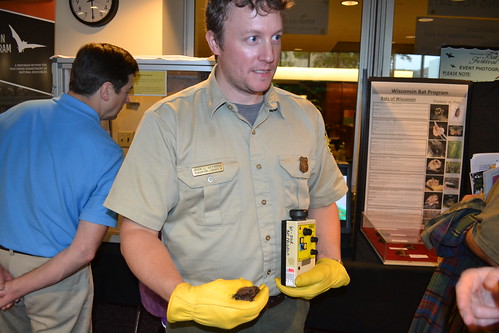

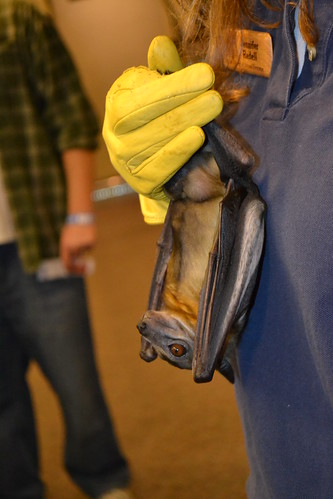
Posted by Leah Anderson, Eastern Region, U.S. Forest Service, on October 24, 2016 at 11:00 AM

Jennifer Redell, a conservation biologist/cave and mine specialist with the Wisconsin Department of Natural Resources, gives a close up and personal look at a straw-coloured fruit bat, the most widely distributed of the African fruit bats. Bats fulfill many important ecosystem functions, such as pollinating flowers and dispersing seeds during their flights. (U.S. Forest Service)
Bats have quite the list of positive effects in our world, from the billions of dollars they save in pesticides to natural pollination and seed spreading. Bats eat about one-half of their body weight in insects each night.
We need bats.
In honor of our furry, flying mammal friends, consider pulling for bats during Bat Week from Oct. 24-31. You can make a difference, whether you get a group together to literally pull invasive plants to help improve habitat and food for bats or figuratively “pull” for bats by sharing why they are important to our ecosystem with your friends and family. And, the great news is that you don’t have to be an adult to help bats.
Kids across America are getting involved in bat conservations in their own backyards. From science projects to lunchtime bat groups to social media campaigns, there are many ways for kids to get involved with helping bats. But don’t take our word for it – we have eight amazing kids from across the USA excited to share their batty experiences. The Bat Squad! webcast series for kids airs during Bat Week featuring four 15-minute webcasts with amazing, action-oriented footage streamed live from BatWeek.org. The webcasts are matched with a Project EduBat activity that is aligned with Next Generation Science Standards.

Brian Heeringa, District Wildlife Biologist on Wisconsin’s Chequamegon-Nicolet National Forest, uses a bat detector to bring the echolocation sounds of a big brown bat into the range of human hearing. Echolocation is a remarkable navigation system that most bat species have that helps them detect obstacles in flight, find their way home, and hunt down their main target – delicious insects. While we can’t hear these ultrasonic sounds, bat detectors record bat calls so wildlife experts can analyze them. (U.S. Forest Service)
Recently, Batman and Smokey Bear joined partners to “pull” for bats in Wisconsin as part of the Wisconsin Bat Festival at the Milwaukee Public Museum. Participants got up close and personal with a number of live native and non-native bats such as a big brown bat, a straw-coloured fruit bat, and a Malayan flying fox, the largest bat in the world. Others put their construction skills to use making green bat boxes from repurposed Chevy Volt materials. Completed bat boxes will be placed on national forests, such as the Chequamegon-Nicolet National Forest, providing much needed habitat to native species.
The event also featured a 70-foot inflatable cave where kids could explore. Brave cavers saw cave formations, bats on walls, and were able to touch the bones and skulls of various animals.
Before entering the cave, everyone was required to take off their street shoes. That served as a lesson about the real-world rules on exploring caves, as explained in an online training video. We all have a role in protecting our caves from White Nose Syndrome in order to #SavetheBats.

A group of students who are working on a children’s book about bats listen as Cindy Sandeno, Threatened, Endangered, and Sensitive Species Program lead with the U.S. Forest Service, talks about the big brown bat she is holding. The big brown bat is not so big. They weigh between one half to three quarter ounce, and their wingspans range can be up to 16 inches. They consume a large number of agriculture and forest pests. (U.S. Forest Service)
An inspiring visitor to the U.S. Forest Service booth was a group of school age children who love bats so much they are in the midst of writing a children’s book to share with other children about why bats are so important.
We hope you’re inspired. Find more information on an invasive pulls near you the Bat Conservation International Inc. Batweek. The site also has fact sheets about invasive plants, why bats are important and archived webcasts.
Want to find a place near you to see bats on your public lands? Read more about these heroes of the night Recreation.gov and how you can help.

A straw-coloured fruit bat is held by Jennifer Redell, a conservation biologist/cave and mine specialist with the Wisconsin Department of Natural Resources. The annual Bat Week events near Halloween help to dispel the notions that bats are to be feared. Rather, bats are an integral part of our ecosystem and many bat populations are declining around the world, largely as a result of human interaction, according to Bat Conservation International. A little brown bat, for example, can eat as many as 1,000 mosquitoes in an hour. Most of the 1,300 bat species worldwide – about 40 of which are found in the U.S. – play vital ecological roles by eating pests that damage agriculture, pollinating valuable plants that ensure production of our food and disperse seeds, sometimes in a further distance than birds. (U.S. Forest Service)
Related Posts
Unique Alligators
From Okefenokee National Wildlife Refuge:
Most visitors come to the Okefenokee with the hope of seeing alligators. Some are lucky enough to see mother alligators and her young. Alligators are unique in the reptile word in that they care for their young for up to 2 years after they are born. Even with the mother guarding them, up to 80% of young hatched are lost to predators such as birds, raccoons, and bobcats. Photo: Vicki Cramer
Most visitors come to the Okefenokee with the hope of seeing alligators. Some are lucky enough to see mother alligators and her young. Alligators are unique in the reptile word in that they care for their young for up to 2 years after they are born. Even with the mother guarding them, up to 80% of young hatched are lost to predators such as birds, raccoons, and bobcats. Photo: Vicki Cramer
Deep Taproots Needed
From U.S. Fish and Wildlife Service, Mountain-Prairie Region:
This photo of an establishing Wyoming big sagebrush seedling, shows the tap root. During its establishment years, growing a tap root deep enough to survive the next drought is a top priority.
Photo: Tom Koerner/USFWS
This photo of an establishing Wyoming big sagebrush seedling, shows the tap root. During its establishment years, growing a tap root deep enough to survive the next drought is a top priority.
Photo: Tom Koerner/USFWS
Monday, October 24, 2016
Newly-discovered bug boasts 4 penises, 200 poison glands & 414 legs (VIDEO) — RT Viral
Explorers in California have discovered a new species of creepy crawly boasting 200 poison glands, four penises and 414 legs.
Newly-discovered bug boasts 4 penises, 200 poison glands & 414 legs (VIDEO) — RT Viral
Newly-discovered bug boasts 4 penises, 200 poison glands & 414 legs (VIDEO) — RT Viral
Sunday, October 23, 2016
Project "Icarus": Following Birds On Their Way South - SPIEGEL ONLINE
There are 1.6 billion songbirds in Europe and half of them fly south for the winter. Scientists would like to follow them -- using sensors attached to the International Space Station. But keeping up isn't easy.
Project "Icarus": Following Birds On Their Way South - SPIEGEL ONLINE
Project "Icarus": Following Birds On Their Way South - SPIEGEL ONLINE
Illinois EPA Sponsors Interactive Environmental Education Event with Riverton Elementary School
Riverton Third and Fourth Graders “Dive In!” to Celebrate the Environment
Illinois.gov - Illinois Government News Network (IGNN) - Search the News Results
Illinois.gov - Illinois Government News Network (IGNN) - Search the News Results
Marram Grass at Fort Sheridan Beach
From U.S. Army Corps of Engineers, Headquarters:
U.S. Army Corps of Engineers, Chicago District work crews plant Marram Grass at Fort Sheridan Beach after the rock revetment was covered in sand to create habitat for native wildlife. For additional information about the project visit http://
U.S. Army Corps of Engineers, Chicago District work crews plant Marram Grass at Fort Sheridan Beach after the rock revetment was covered in sand to create habitat for native wildlife. For additional information about the project visit http://
Roundtable Isn’t Your Typical CIG Project
From the #USDA:

Posted by Kari Cohen, USDA-NRCS, on October 20, 2016 at 1:30 PM

Seventy people—representing conservation investment firms, nonprofit organizations, Federal agencies and more—met to explore ways to increase private capital investment in working lands conservation.
This isn’t your typical Conservation Innovation Grant (CIG) project. There’s no university collecting and analyzing data, or ground-breaking technology being evaluated here.
Nope. This one is a good, old-fashioned meeting.
Why would a meeting be such an important CIG project? Because strategic stakeholders from all over the world come together to deliberate on obstacles, challenges, and generate solutions to increase the amount of private capital, institutional investments, and other sources of non-Federal funding dedicated to natural resource conservation on both public and private lands.
They ask questions like: How can we make it easier for farmers, ranchers, and forest landowners to participate in carbon markets? What are new approaches for funding water quality improvements and green infrastructure? How can the next Farm Bill be leveraged to facilitate private investment in working lands conservation?
“We have to find new ways to compensate producers for the water quality, air quality, and wildlife habitat improvements they provide,” said USDA’s Natural Resources Conservation Service (NRCS) Chief Jason Weller. “NRCS is committed to developing new partnerships and tools to support conservation finance approaches.”
These complex questions and more were on the minds of attendees of the Conservation Finance Practitioners Roundtable (Roundtable) recently held in Washington, D.C. at the White House.
Seventy people—representing conservation investment firms, nonprofit organizations, Federal agencies and more—met to explore ways to increase private capital investment in working lands conservation.
The Conservation Finance Network conceived the Roundtable as a forum, which is scheduled to meet two to three times a year, over the next three years.
The Roundtable is administered and organized by the Conservation Finance Network in close cooperation with the NRCS Environmental Markets and Conservation Finance Team. The NRCS provides financial and strategic support for the Roundtable through its Conservation Innovation Grants (CIG) program.
In addition to the Roundtable project, NRCS funded 21 conservation finance projects through CIG in 2015 and 2016. Below are examples of these innovative projects:
- The Climate Trust established a new Working Lands Carbon Facility to fund greenhouse gas emissions reduction projects on farms, ranches, and forested lands (anaerobic digesters, grassland projects, and improved forest management).
- Investment capital firm Encourage Capital is establishing a Working Lands Investment Fund to stimulate investment in voluntary conservation through the purchase of carbon credits generated by producers.
- Fresh Coast Capital is piloting an innovative approach to financing green infrastructure in legacy cities through impact investing in urban agroforestry and harvestable crops.
The Roundtable project helps projects like these define voluntary working-lands conservation in the 21st Century. The challenges of providing food and fiber over the next century are enormous, the challenge also provides a unique opportunity to view conservation through a new lens.
Read a recent op-ed from Chief Weller on the Conservation Finance Network website and learn more about how the Chief views this opportunity to deploy significant investment capital to protect, restore and maintain our natural ecosystem.
Learn more about the 2016 conservation finance CIG projects here.
Related Posts
Saturday, October 22, 2016
Gulf of Mexico Communities Depend on a Healthy Gulf
From the #USDA:
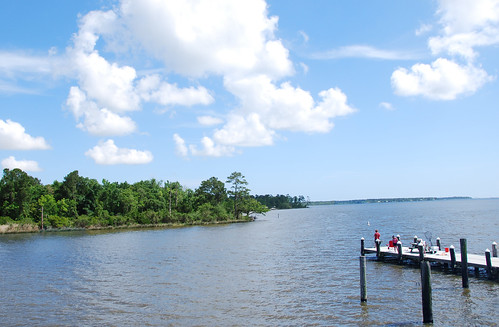
Posted by Agriculture Secretary Tom Vilsack, on October 20, 2016 at 11:30 AM

The Gulf Coast ecosystem is vital to our nation and our economy.
The Gulf Coast ecosystem is vital to our nation and our economy, providing valuable energy resources, abundant seafood, extraordinary recreational activities and a rich cultural heritage. This ecosystem was significantly injured by the Deepwater Horizon oil spill—the worst environmental disaster in U.S. history—and has also suffered from harm caused by hurricanes, subsidence and other human actions and naturally-occurring events.
With the historic settlement of the litigation with BP, there will be up to $16 billion available for ecosystem restoration in watersheds across Florida, Alabama, Mississippi, Louisiana and Texas through the RESTORE Act, the Natural Resource Damages Assessment process and the National Fish and Wildlife Foundation.
Today, the White House Council on Environmental Quality and the Office of Management and Budget released a memorandum directing federal agencies to take steps to ensure we are doing everything we can to deliver restoration dollars more efficiently and effectively. The memo calls upon USDA, the Departments of Army, Commerce, Interior and the EPA to prioritize ecosystem restoration investments in the Gulf and ensure robust coordination in the review and permitting processes. Agencies will also ensure that we work together and with the states in designing strategic projects and maximizing leveraging opportunities.
The federal government has a longstanding partnership with the five Gulf Coast States for conservation and restoration of the region. Given the complexity and scope of the restoration challenges before us, it is imperative that we build on this partnership and work together on this multi-generational ecological restoration.
USDA serves as the chair of the Gulf Coast Ecosystem Restoration Council (RESTORE Council). Late last year the council approved the first tranche of funds for Gulf restoration. This initial investment of approximately $157 million will deliver restoration projects and help fund detailed plans for additional projects that can be implemented as more funds become available from the BP settlement.
In August, the RESTORE Council released a draft update to our Comprehensive Plan. This draft update provides a framework that ensures restoration investments maximize benefits for the ecosystem and for the many Gulf communities that depend on a healthy Gulf. The draft plan improves collaboration among Council members and partner restoration programs, improves how we use science to restore the Gulf, increases transparency and advances planning for the investments that the federal government and States will make to restore the Gulf. After reviewing the extensive public comments the Restore Council has received over the last several weeks, we will finalize the comprehensive plan later this year.
But with these dollars, as well as funds from other sources, it is vital that the federal agencies be as efficient as possible in designing, analyzing and ultimately putting meaningful restoration projects on the ground in each of the states. These projects will include sediment diversions, forest and marsh restoration, oyster restoration, more sustainable farm and ranch operations, land conservation, and many other activities.
At the same time, it is critical that we improve the efficiency and timeliness of permitting and other regulatory reviews required to implement these projects.
As Chair of the RESTORE Council, I want to thank Director Donovan and Managing Director Goldfuss for their leadership in taking steps that will improve the speed and quality of restoration in the coming years. On behalf of USDA and our other federal partners, we look forward to working with the States to help restore the Gulf for residents of the region and for all Americans.
Related Posts
FAQ FRIDAY Drones are Not Allowed Anywhere in #RMNP
From Rocky Mountain National Park:
FAQ FRIDAY Drones are Not Allowed Anywhere in #RMNP
Want to fly your drone? Rocky is NOT the place to do it. Drones/Unmanned Aircraft Launching, landing, or operating an unmanned aircraft from or on lands and waters administered by the National Park Service within the boundaries of Rocky Mountain National Park is prohibited.
What is an Unmanned Aircraft? It means a device that is used or intended to be used for flights in the air without the possibility of direct human intervention from within or on the device, and the associated operational elements and components that are required for the pilot or system operator in command to operate or control the device (such as cameras, sensors, communication links.) This term actually includes all types of devices that meet this definition, including model airplanes, quad copters, and drones that are used for any purpose, including for recreation or commerce.
(file photo NPS/VIP Beach) ks
FAQ FRIDAY Drones are Not Allowed Anywhere in #RMNP
Want to fly your drone? Rocky is NOT the place to do it. Drones/Unmanned Aircraft Launching, landing, or operating an unmanned aircraft from or on lands and waters administered by the National Park Service within the boundaries of Rocky Mountain National Park is prohibited.
What is an Unmanned Aircraft? It means a device that is used or intended to be used for flights in the air without the possibility of direct human intervention from within or on the device, and the associated operational elements and components that are required for the pilot or system operator in command to operate or control the device (such as cameras, sensors, communication links.) This term actually includes all types of devices that meet this definition, including model airplanes, quad copters, and drones that are used for any purpose, including for recreation or commerce.
(file photo NPS/VIP Beach) ks
A look inside the former limestone mine
From U.S. Fish and Wildlife Service Midwest Region:
Just in time for Halloween, the world's largest hibernation site for endangered Indiana bats is preserved as Sodalis Nature Preserve in Hannibal, Missouri. More than 168,000 bats winter here!http://go.usa.gov/xkwNS
Photo: A look inside the former limestone mine by Courtney Celley/USFWS.
Just in time for Halloween, the world's largest hibernation site for endangered Indiana bats is preserved as Sodalis Nature Preserve in Hannibal, Missouri. More than 168,000 bats winter here!http://go.usa.gov/xkwNS
Photo: A look inside the former limestone mine by Courtney Celley/USFWS.
First light along the Green River on Seedskadee National #WildlifeRefuge
From U.S. Fish and Wildlife Service, Mountain-Prairie Region:
First light along the Green River on Seedskadee National #WildlifeRefuge. That brief period when it is light enough to see, but before the sun peeks above the horizon, can often be when wildlife are the most visible. They have been out feeding during the night and have not yet settled in for the day. Here a mule deer doe stops for a drink before heading to her day bed. A raccoon can still be seen looking for crayfish or some other creature to eat by flipping over rocks, before slipping off for the day to sleep in a hollowed out cottonwood stump.
(Tom Koerner / #USFWS)
First light along the Green River on Seedskadee National #WildlifeRefuge. That brief period when it is light enough to see, but before the sun peeks above the horizon, can often be when wildlife are the most visible. They have been out feeding during the night and have not yet settled in for the day. Here a mule deer doe stops for a drink before heading to her day bed. A raccoon can still be seen looking for crayfish or some other creature to eat by flipping over rocks, before slipping off for the day to sleep in a hollowed out cottonwood stump.
(Tom Koerner / #USFWS)
Thursday, October 20, 2016
Illinois EPA Announces Vehicle Emissions Testing Network Updates
New Contract to Offer More Efficient, Less Expensive Tests
Illinois.gov - Illinois Government News Network (IGNN) - Search the News Results
Illinois.gov - Illinois Government News Network (IGNN) - Search the News Results
Five Ways Agroforestry Can Grow Forest Products and Benefit Your Land, Your Pockets & Wildlife
From the #USDA:

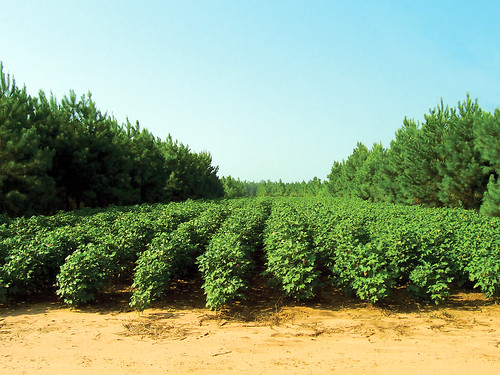
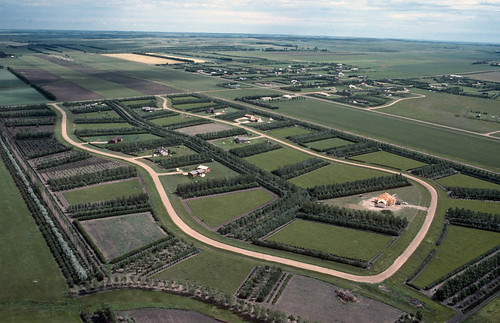

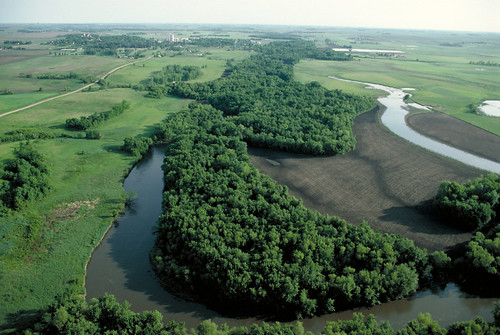
Posted by Jocelyn Benjamin, USDA-NRCS and Kate MacFarland, USDA National Agroforestry Center, on October 19, 2016 at 5:00 PM
Much of the beauty in American agricultural landscapes is complemented by the trees in those landscapes. We depend on these tree’s products every day–from the paper our children use in school, to many of the fruits we eat, the wood burning in our fireplaces, and the wildlife habitat created by those trees and forests.
Forests are vital to our economy, as well. Trees are part of forest ecosystems that play a critical role in our livelihoods, providing environmental, economic and social values. Agroforestry practices support agricultural production and help improve water quality and air quality, soil health, and wildlife habitat. These working trees can also grow fiber, food, and energy. And with the U.S. Census Bureauprojecting a population surge to nine billion by 2044, forests and agroforests can help meet the growing demands for food, shelter, medicine, and recreation.
Private landowners, including farmers and ranchers, are in a great position to help conserve and protect our trees and forests. Private landowners own more than half of the woods and forests in the United States, with many of them as part of a farm or ranch. Landowners are increasingly using agroforestry to add trees to their landscapes or improve the health of their forests. Agroforestry allows landowners to intentionally grow trees and shrubs with crops and/or animal farming systems, which creates a more diverse agricultural operation and helps to boost their profits.
So as we celebrate National Forest Products Week, we are highlighting five popular agroforestry practices that produce a diverse set of forest products while benefiting your land, your pockets, and wildlife:

Silvopasture is an important system to help landowners diversify their operations and their income. This system combines trees with a livestock operation by managing forage, livestock, and trees on the same acre. Silvopasture systems provide shade and shelter for livestock, while benefiting forage production. This combination can also bring in extra income from timber products, Christmas trees, or recreation.
1. Silvopasture is an important system to help landowners diversify their operations and their income. This system combines trees with a livestock operation by managing forage, livestock, and trees on the same acre. Silvopasture systems provide shade and shelter for livestock, while benefiting forage production. This combination can also bring in extra income from timber products, Christmas trees, or recreation.

Alley cropping grows crops between maturing trees, called alleyways, for annual income. Like silvopasture, this system also diversifies operations by creating both annual and long term income streams. It also can protect crops, improve water quality, improve nutrient utilization, and store carbon. Photo credit: Shibu Jose, University of Missouri Center for Agroforestry
2. Alley cropping grows crops between maturing trees, called alleyways, for annual income. Like silvopasture, this system also diversifies operations by creating both annual and long term income streams. It also can protect crops, improve water quality, improve nutrient utilization, and store carbon.

Windbreaks are plantings of single or multiple rows of trees, shrubs or both, that shelter crops, soil, animals, homes, and people from wind, snow, dust, or odors. These systems save energy and can cut home heating costs. Windbreaks also help net big gains in carbon storage, improve income by increasing crop yields, and protect livestock from heat and cold stress.
3. Windbreaks are plantings of single or multiple rows of trees, shrubs or both, that shelter crops, soil, animals, homes, and people from wind, snow, dust, or odors. These systems save energy and can cut home heating costs. Windbreaks also help net big gains in carbon storage, improve income by increasing crop yields, and protect livestock from heat and cold stress.

Forest farming is growing and protecting high-value specialty crops under the forest canopy, which is adjusted to the correct shade level the crops prefer. This is done by thinning an existing forest to leave the best canopy trees for continued timber production while creating the best conditions for the understory crop. Non-timber forest products grown using forest farming methods don’t just provide an additional source of income, they also help conserve the species in our landscapes. Photo credit: Jeanie Davis, North Carolina State University
4. Forest farming is growing and protecting high-value specialty crops under the forest canopy, which is adjusted to the correct shade level the crops prefer. This is done by thinning an existing forest to leave the best canopy trees for continued timber production while creating the best conditions for the understory crop. Non-timber forest products grown using forest farming methods don’t just provide an additional source of income, they also help conserve the species in our landscapes.

Riparian forest buffers are natural or established trees, shrubs, and grasses situated next to rivers, streams and lakes that help enhance and protect aquatic resources by filtering farm runoff and preventing erosion. Buffer areas can also support wildlife habitat, produce crops, improve water quality, and reduce flood damage.
5. Riparian forest buffers are natural or established trees, shrubs, and grasses situated next to rivers, streams and lakes that help enhance and protect aquatic resources by filtering farm runoff and preventing erosion. Buffer areas can also support wildlife habitat, produce crops, improve water quality, and reduce flood damage.
Agroforestry practices serve many beneficial purposes and landowners are rolling up their sleeves to work with USDA’s National Agroforestry Center and partners across the country to add trees to agricultural landscapes, enhancing conservation outcomes while sustaining their farms, ranches, and homes.
Related Posts
Wednesday, October 19, 2016
Aquatic Ecosystems
From U.S. Geological Survey (USGS):
"USGS aquatic ecosystems research informs the needs of regulatory agencies by identifying science-based solutions that can restore aquatic ecosystems to favorable health and mitigate disease."
Purcell, M.K., and Harris, M.C., 2016, Science to support aquatic animal health: U.S. Geological Survey Fact Sheet 2016-3091, 2 p.http://pubs.usgs.gov/fs/
"USGS aquatic ecosystems research informs the needs of regulatory agencies by identifying science-based solutions that can restore aquatic ecosystems to favorable health and mitigate disease."
Purcell, M.K., and Harris, M.C., 2016, Science to support aquatic animal health: U.S. Geological Survey Fact Sheet 2016-3091, 2 p.http://pubs.usgs.gov/fs/
Fall Foliage
From USFWS Northeast Region:
Can't make it to Vermont for fall foliage? We'll bring Vermont to you. Welcome to Missisquoi National Wildlife Refuge!
Photo credit: Ken Sturm/USFWS
Can't make it to Vermont for fall foliage? We'll bring Vermont to you. Welcome to Missisquoi National Wildlife Refuge!
Photo credit: Ken Sturm/USFWS
Walleye
From U.S. Geological Survey (USGS):
Warming water temperatures from climate change will likely mean fewer walleye – a preferred fish for many anglers – and more largemouth bass in midwestern lakes, according to a new study supported by the USGS National Climate Change and Wildlife Science Center. The researchers examined more than 2,100 Wisconsin lakes and found that walleye populations have been declining for the past 30 years, a trend that is predicted to continue into the future. On the other hand, largemouth bass, which prefer warmer lakes, are anticipated to become more abundant. These changes will have implications for the freshwater sport fishing industry, which is valued at more than $1.5 billion in Wisconsin. Learn more:http://go.usa.gov/xKtAD
#ClimateChange #fish
Photo: Walleye. Credit: Gretchen Hansen
Warming water temperatures from climate change will likely mean fewer walleye – a preferred fish for many anglers – and more largemouth bass in midwestern lakes, according to a new study supported by the USGS National Climate Change and Wildlife Science Center. The researchers examined more than 2,100 Wisconsin lakes and found that walleye populations have been declining for the past 30 years, a trend that is predicted to continue into the future. On the other hand, largemouth bass, which prefer warmer lakes, are anticipated to become more abundant. These changes will have implications for the freshwater sport fishing industry, which is valued at more than $1.5 billion in Wisconsin. Learn more:http://go.usa.gov/xKtAD
#ClimateChange #fish
Photo: Walleye. Credit: Gretchen Hansen
Lake Andes National Wildlife Refuge in South Dakota
From USFWS National Wildlife Refuge System:
From her first glimpse of Lake Andes National Wildlife Refuge in South Dakota, teacher Kelly Preheim knew she had found a gem for herself and her students. One outcome: the Chickadee Bird Club for kids in kindergarten through 4th grade. Read her story: http://bit.ly/2eh6wiY
From her first glimpse of Lake Andes National Wildlife Refuge in South Dakota, teacher Kelly Preheim knew she had found a gem for herself and her students. One outcome: the Chickadee Bird Club for kids in kindergarten through 4th grade. Read her story: http://bit.ly/2eh6wiY
Ecologists Look to Traditional Knowledge to Bolster Sustainability Science
From the #USDA:
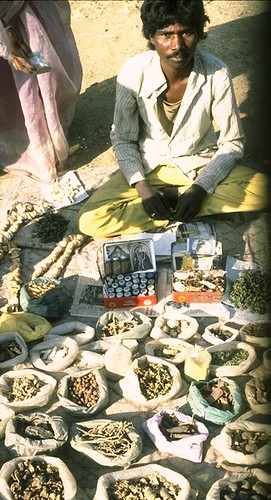
Posted by Diane Banegas, Research and Development, U.S. Forest Service, on October 18, 2016 at 4:00 PM

The therapeutic uses of many forest plant species, such as those pictured above in a local market in central India, are based on generations of experiences by traditional medical practitioners, and represent an important component of traditional forest knowledge. Photo by John Parrotta
People around the world manipulate ecosystems for their own purposes. It’s what you leave behind when you’re finished working or living in the area that determines whether the ecosystem survives or is irreparably harmed for future generations.
For scientists like John Parrotta, national program leader for international science issues with the U.S. Forest Service, knowing what to leave behind is not always found in a college textbook or scientific journal.
“We can do sustainability science better if we learn from traditional ecological knowledge,” Parrotta said. “These knowledge systems typically have different roots than western science. They are more holistic in their thinking.”
Traditional ecological knowledge, or TEK, does not always come from indigenous peoples such as Native American tribes. The sources for this knowledge exists in many rural communities around the globe.
People in many parts of Europe who own forests in addition to farmland have for centuries managed their trees to supply their needs for small timber, fence posts, and firewood as well as to improve wildlife habitat for hunting purposes.
“Most of the agroforestry practiced today throughout the world is rooted in traditional ecological knowledge,” Parrotta said. “Scientists have only recently translated these generations-old insights and practices into scientific language in an effort to promote these sustainable practices more widely”.
An example of agricultural practices that embody the long-range perspectives typical of traditional knowledge holders is the shifting cultivation system used for decades in the mountainous region of northeast India. Farmers there cultivate an area of forest land for a few years before moving on to a new location. Before leaving, they plant a variety of trees and shrubs to prevent erosion and help restore the soil’s nutrients. Years down the road, when they return to the area, the land is in better condition than it would be if they’d just abandoned it.
Traditional ecological knowledge is not just about food. A number of Forest Service scientists have been studying how traditional knowledge can contribute to finding sustainable solutions to pressing forest management and conservation issues. For example Frank Lake, a scientist with the agency’s Pacific Southwest Research Station in California, studies traditional fire-management practices in Oregon and gives practical recommendations to fire managers.
“This is truly innovative work that combines the best of generations-old wisdom and modern forest science,” Parrotta said.
Related Posts
Unique Conservation Partnership Helps Create Win-Win Situation
From the #USDA:


Posted by Ciji Taylor, Natural Resources Conservation Service, on October 18, 2016 at 1:00 PM

Raven’s Nest is one of two ranches that will protect more than 15,000 acres of grassland in southeastern Colorado. Photo by Michael Menefee.
By keeping their grasslands intact, two Colorado ranches are reducing greenhouse gas emissions and protecting vital wildlife habitat, all while earning additional revenue.
It may seem too good to be true, but it is thanks to a unique partnership spearheaded by the Climate Action Reserve, one of North America’s leading carbon offset project registries.
With the help of a Conservation Innovation Grant (CIG) from USDA’s Natural Resources Conservation Service (NRCS), the Climate Action Reserve listed Raven’s Nest and Heartland Ranch, both owned by the Southern Plains Land Trust (SPLT), as the first two grassland offset projects developed and executed under a new Grassland Project Protocol.
North American grasslands have tremendous potential for storing carbon in healthy soils and biomass, providing a climate-smart conservation solution that halts greenhouse gas emissions.
When grasslands are tilled and converted to croplands, they release large amounts of carbon dioxide into the atmosphere. Carbon dioxide is one of the leading greenhouse gases contributing to global climate change. By not converting their grasslands to cropland, farmers can earn offset credits that can be sold in a carbon market. Under this arrangement, the lands remain working lands and can be grazed as prescribed by a grazing management plan, and the grassland can even be enhanced with additional conservation practices. The only prohibition is that the grasslands cannot be tilled, which would release the carbon stored in the soil.

The grasslands of Heartland Ranch have tremendous potential for storing carbon in healthy soils and biomass. Photo by Nicole Rosmarino.
NRCS is a federal leader in supporting the development of environmental markets, largely through its CIG program.
“Through the CIG program, NRCS leverages environmental markets to achieve our mission of getting more conservation on the ground,” said NRCS Chief Jason Weller. “This partnership with CAR demonstrates how ranchers can keep ranching and benefit from new revenue streams while ensuring that grasslands provide nesting habitat for wildlife, are more resilient to extreme weather, and reduce carbon emissions to the atmosphere.”
Raven’s Nest and Heartland Ranch, with help from The Climate Trust and the Environmental Defense Fund, will protect more than 15,000 acres of grassland, including 2,100 acres that are under threat of being converted to cropland in southeastern Colorado. These acres will generate offset credits that can be sold by the farmers for revenue in the carbon market, and SPLT can continue earning revenue from ranching on the land as prescribed in their grazing management plan. SPLT has plans to enroll an additional 7,600 acres in 2017.
The Conservation Innovation Grant is supporting the development and third-party verification of the grasslands projects, helping farmers and ranchers navigate the mechanics of engaging in carbon markets.
“Protecting grasslands presents a tremendous opportunity to make ranchers and land owners powerful forces in addressing climate change, and by using the carbon market as a tool to fund the protection, there is a win-win-win situation,” said Craig Ebert, President, Climate Action Reserve. “We are honored to work with SPLT and the EDF on this pioneering initiative and commend SPLT for being a pioneer. We encourage other ranchers and landowners to explore this new opportunity.”
Since 2009, NRCS has awarded more than 400 Conservation Innovation Grants to support innovative conservation approaches and technologies that develop new ways to attract private investment in natural resource conservation and help farmers and ranchers make their operations more resilient to climate change. Find out how farmers and ranchers in North Dakota and rice growers in California and the Mid-South are benefiting from carbon markets and CIG projects.
For the latest selection of Conservation Innovation Grants, view the 2016 award announcement or to find out more about current and past projects, visit Conservation Innovation Grants on the web.
Related Posts
Monday, October 17, 2016
American bald eagle
From U.S. Fish and Wildlife Service Midwest Region:
Thanks to outdoor enthusiasts and dedicated conservationists, you are more likely to spot a bald eagle along Lake Superior's Abbaye Peninsula! Learn more: http://go.usa.gov/xkye3
Photo: American bald eagle courtesy of David Ellis/Creative Commons. https://flic.kr/p/wRsnz5
Thanks to outdoor enthusiasts and dedicated conservationists, you are more likely to spot a bald eagle along Lake Superior's Abbaye Peninsula! Learn more: http://go.usa.gov/xkye3
Photo: American bald eagle courtesy of David Ellis/Creative Commons. https://flic.kr/p/wRsnz5
Sunday, October 16, 2016
Spotted sandpiper
From U.S. Fish and Wildlife Service Midwest Region:
Spotted sandpipers have the largest breeding area of all North American sandpipers. In the winter, they head to southern states, Central and South America.
Photo: Spotted sandpiper courtesy of Skip Russell/Creative Commons. https://flic.kr/p/N8aB3n
Spotted sandpipers have the largest breeding area of all North American sandpipers. In the winter, they head to southern states, Central and South America.
Photo: Spotted sandpiper courtesy of Skip Russell/Creative Commons. https://flic.kr/p/N8aB3n
Subscribe to:
Posts (Atom)














